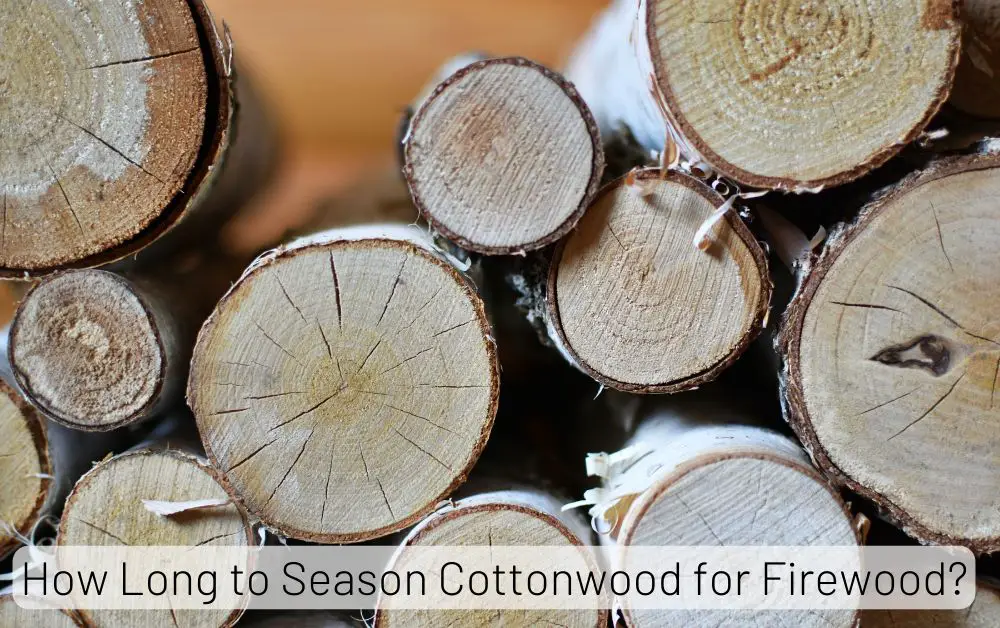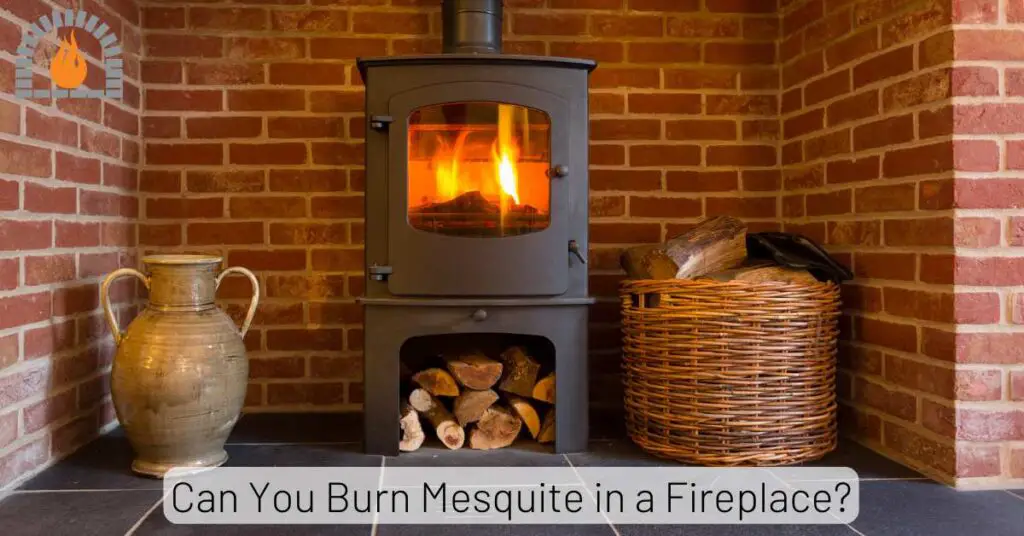Picture this: you’ve just chopped a fresh batch of firewood, stacked it neatly, and felt great about your efforts. Then, out of nowhere, a heavy downpour drenches your perfectly prepared woodpile. Now you’re wondering: can I still use this firewood?
Don’t worry, you can! Wet firewood may be an inconvenience, but it’s not a lost cause.
In this guide, we’ll walk through practical tips to help you dry out and properly store your firewood, so it’s ready to burn when you need it.
Why Properly Dried Firewood Matters
When it comes to burning wood efficiently, dryness is key. The moisture content of your firewood directly impacts how well it burns and how much heat it produces.
Wet firewood is harder to ignite and produces more smoke than dry firewood (Use moisture meter to measure moisture content in firewood). Instead of producing heat, the energy goes into evaporating the water in the wood.
This results in poor heat output and excessive smoke, which can fill your home with unwanted pollutants.
One of the most common mistakes people make is storing firewood improperly, leaving it exposed to rain, snow, or high humidity. Firewood needs a dry, ventilated space to maintain its quality, and failing to protect it can lead to mold, rot, and inefficient burning.
Can You Still Use Firewood That Got Wet?
Yes, you can use firewood that got wet, but the key is drying it out properly before burning it. Wet firewood can still be salvaged, but it won’t burn efficiently if it’s too damp.
Firewood that’s too wet, typically with a moisture content above 20%—won’t burn well. A moisture meter can be handy in measuring this. Ideally, firewood should have a moisture content between 15% and 20%.
If the firewood has only been lightly rained on and is damp on the surface, it’s likely still usable after drying. Check the ends of the wood, if they’re dark and cracked, the wood is seasoned and should dry relatively quickly.

Effective Strategies for Using Firewood that Got Rained On
If your firewood got rained on, don’t worry—it’s still usable with the right strategies. Here are some effective ways to handle and dry wet firewood:
1. Separate the Dry and Wet Logs
Start by sorting out any dry or less wet logs from the heavily soaked ones. This way, you can use the dry wood immediately while focusing on drying out the wet logs.
It saves time and ensures you don’t mix damp wood with dry wood, which could delay the drying process of all your firewood.
2. Air Drying in Sunlight
Place the wet firewood in direct sunlight for drying. Space the logs apart and position them to expose as much surface area as possible to the sun.
Sunlight helps evaporate moisture from the wood quickly, making it ready for use. Air circulation speeds up this process, allowing the moisture to escape more easily.
3. Use a Cover for Rain Protection
While air drying, cover the top of the firewood stack with a firewood cover, leaving the sides exposed to allow airflow.
This prevents further rain from soaking the wood while still allowing proper ventilation to dry it out.
4. Use a Wood Rack or Pallet
Stack the firewood on a raised platform, like a pallet or wood rack, to keep it off the damp ground. Ensure airflow under the pile.
This prevents moisture from the ground from seeping into the wood and ensures proper airflow from all sides, speeding up the drying process.

Rotate the Firewood Regularly
Every few days, turn the wood over so the less exposed parts face the air and sun.
Rotating the firewood ensures even drying and helps get rid of moisture that may have been trapped underneath the logs.
6. Use a Dehumidifier in an Enclosed Space
If you have access to a shed or garage, place the firewood in there with a dehumidifier to extract moisture from the wood.
A dehumidifier can speed up the drying process, especially in humid conditions where natural drying may take longer.
7. Build a Small Fire to Help Dry Logs
If the firewood is not overly soaked, you can start a small fire with dry kindling and gradually add the damp wood.
The heat from the fire will help evaporate the moisture from the logs, allowing them to burn more efficiently once they are dry enough.
8. Split the Logs for Faster Drying
Split the logs into smaller pieces to increase their surface area and allow them to dry faster.
Smaller pieces of wood dry much more quickly than large logs because the moisture can escape from more exposed surfaces.
9. Store the Wood Indoors (Optional)
Once the wood has been air-dried for a while, store it in a dry, well-ventilated area indoors to further reduce moisture content.
Indoor storage with proper ventilation prevents the wood from being exposed to more moisture while continuing to dry it.
10. Use a Firewood Kiln (If Available)
If you have access to a firewood kiln or drying chamber, you can place the wet firewood inside to quickly reduce its moisture content.
Kiln drying rapidly removes moisture, making the wood ready to burn much faster than air drying alone.
What to Avoid When Trying to Dry Firewood
One common mistake is covering the entire firewood stack with a plastic sheet, which traps moisture and prevents proper drying. Always leave space for air to circulate.
Plastic covers can cause condensation, which leads to mold and mildew on your firewood. If you must use a cover, choose a breathable material that prevents rain from getting in while allowing moisture to escape.
How Long Does It Take for Wet Firewood to Dry?
The drying time depends on the type of wood, how wet it is, and the weather conditions. Hardwoods take longer to dry than softwoods, and logs that have been soaked by heavy rain may need a few weeks to fully dry.
To speed up drying, split the logs into smaller pieces, increase airflow, and expose them to as much sunlight as possible. Smaller logs dry faster than large ones, and more surface area means quicker evaporation.

How to Tell If Firewood is Ready to Burn After Drying
One way to check if firewood is ready to burn is by performing the crackle test. Dry wood tends to crackle when burned, while wet wood hisses as moisture evaporates.
A moisture meter is a more precise way to check if your wood is ready. Aim for a moisture content between 15% and 20% before burning.
The Best Methods to Store Firewood and Keep It Dry
A firewood shed is an excellent way to keep your wood dry and well-ventilated. Make sure the shed has a roof to protect from rain and is elevated off the ground to prevent water from seeping in.
Elevating your firewood stack on a pallet or rack keeps the bottom logs from absorbing moisture from the ground. This is a critical step for preventing rot and ensuring your wood stays dry.
Should You Use Wet Firewood in an Emergency?
In emergencies, you can use wet firewood but try to mix it with dry wood or kindling to get a fire going. The wet wood will eventually catch, but it may produce more smoke and less heat.
Consider using fire starters, dry kindling, or even an alternate heat source if possible. These alternatives can make a significant difference in emergency situations.
How to Improve the Efficiency of Your Fireplace or Wood Stove
Proper ventilation ensures that your fireplace or stove burns efficiently. Clean your chimney regularly to prevent blockages and creosote buildup.
Regularly maintaining your fireplace or wood stove ensures optimal performance and safety. Clean the ashes and soot after each use to improve air circulation.
My Final Thoughts
Dealing with firewood that got rained on may seem frustrating, but with a few simple steps, you can dry it out and store it properly.
Focus on improving airflow, using sunlight, and investing in good storage solutions to keep your firewood in tip-top shape. By following these tips, you’ll always have dry, ready-to-burn firewood, even if it gets caught in the rain.
FAQs
Can you burn slightly damp firewood?
Yes, you can burn slightly damp firewood, but it’s not ideal. It will produce more smoke and less heat than dry firewood.
How can I tell if my firewood is too wet to burn?
A moisture meter can help you determine if your firewood is too wet. Ideally, it should have a moisture content between 15% and 20%.
Is it worth investing in a firewood cover?
Yes, a firewood cover helps protect your wood from rain and snow, keeping it dry and ready to use.
What’s the best way to store firewood in rainy climates?
In rainy climates, a firewood shed or elevated rack with a breathable cover is the best storage option.
How long should firewood dry before burning?
Firewood should dry for at least 6 to 12 months, depending on the type of wood and the weather conditions.
Affiliate Disclosure: Fireplaceadviser.com is a participant in the Amazon Services LLC Associates Program. We may earn a commission when you click on certain links on this site and purchase.

Hello!! I am Jamal Khan. I often fix my home electric heaters and gas stove problems and research the common issues in the heating units to improve my knowledge and expertise. The aim of establishing fireplaceadviser.com is to share my expertise and knowledge with my audience.


















